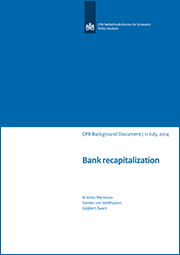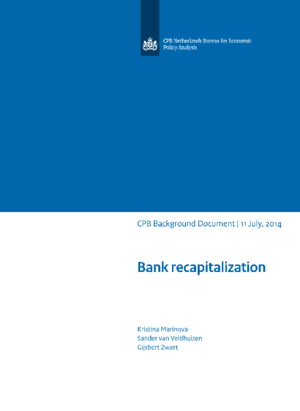Bank recapitalization

In this CPB Background Document we discuss the welfare costs of undercapitalized banks and review the empirical literature. Undercapitalized banks are bad for the economy mainly for two reasons. The first is misallocation of credit resulting from banks gambling for resurrection and reluctance to recognize losses. The second is contraction of credit supply driven by banks reducing their assets to increase their capital ratios. In this respect, we describe the experience in previous financial crises.
Further, we analyze the potential private costs of bank recapitalization through equity issuance from a theoretical and empirical perspective. We perform an event study on bank equity issuance in the EU and US for the period 2007-2013. The results show a significant negative effect of SEOs on bank stock prices. However, this effect is on average not extreme and is comparable with other events. The negative effect on stock prices is partially compensated by a significant reduction of banks’ funding costs proxied by CDS spreads.
The analysis concludes with a discussion of the appropriate policy options to enhance bank recapitalization.
